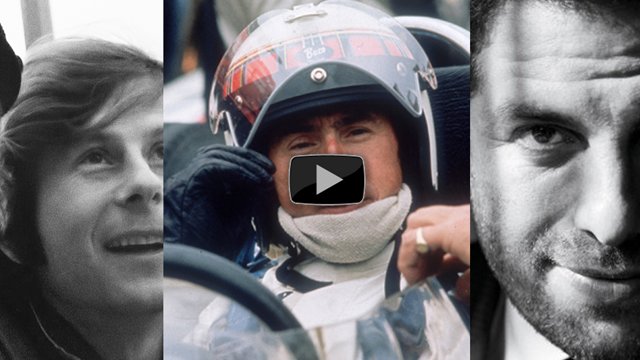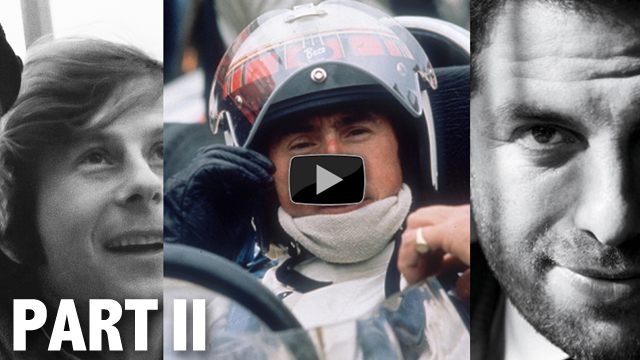A conversation with Formula 1 legend Jackie Stewart and Hollywood mogul Brett Ratner, and a noticeably absent Roman Polanski.
With apologies to James Agee, let us now praise famous dead men: Jo “Seppi” Siffert, Jochen Rindt, Lorenzo Bandini, Piers Courage, Francois Severt. These are just a few of the dozen Formula 1 racers who died in the eight years that Grand Prix legend, Jackie Stewart was dubbed the Flying Scot for his remarkable run at the top of the world’s fastest, most dangerous sport. “We were killing between four and eight drivers a year,” Stewart has said of the era in which he was king. “If you raced for five full seasons, there was a two-in-three chance that you were going to die.
Motor racing is still the fastest sport, but it’s no longer the most dangerous—the NFL and the World Boxing Federation can fight over that dubious distinction. No one has died in a Formula 1 Championship since Ayrton Seena in 1994, and much of the change was lead by Stewart, who witnessed so many friends die on Europe’s treacherous courses that he dedicated his life to making the sport safer.
Stewart, who won 27 Grand Prix titles in eight years, stood out as a loquacious dandy sporting a black Corduroy cap and long sideburns. “The longer they got, the faster I got,” he wisecracks. A working class kid from near Glasgow, he once described himself as “completely uneducated by traditional standards,” and had such severe dyslexia he couldn’t recite the alphabet. Yet by the time he was 30, Stewart was as famous at home as The Beatles and Twiggy. It was that mix of celebrity, sex, and danger that drew another global superstar, Roman Polanski, to shadow Stewart as he prepared to race the Monaco Grand Prix in 1971. The resulting documentary, Weekend of a Champion, was never released at the time, and might have been left moldering in a cupboard if it wasn’t for a phone call from Polanski’s old lab in London.
“They contacted me asking what I wanted to do with the negatives of the film, whether they should destroy it,” Polanski recalled during a recent interview. “So I looked at the film and I liked it, after 40 years almost. I decided to give it a new life.”
After showing the film to Rush Hour director Brett Ratner, a long-time friend and mutual fan of the sport, the idea of giving a proper release to Polanksi’s time capsule took shape. To do that, Polanski and Stewart returned to the same hotel room, at the Hotel de Paris in Monaco where much of the original documentary was filmed in (the first time around Stewart is in his underwear; the second time—wisely—in a suit). The result is a great snapshot of two men—friends—at two moments in their lives: at pinnacle of their young success, and then older, more reflective, with the added hindsight of 40 years.
Like Polanksi and Stewart, Brett Ratner has a powerful biography of his own. As a child he shared a room with his great-grandmother—a Holocaust survivor—in a four-bedroom house in Miami. The other rooms were divided between his mother, his grandparents, and his uncle. He didn’t get to meet his father until his 16th birthday. “One day, I got the courage to ask him why he never visited me as a child,” he told The Hollywood Reporter in 2012. “He explained that he made the difficult decision to stay away because he was embarrassed since he had been disowned by his family, had abused drugs for many years and knew he couldn’t provide for me or my mom. Holding a job was impossible for him.” A few years later, Ratner ran into his father on the street, homeless but fiercely independent. “He would occasionally call to check in, but it pained him to ask for help, so he stayed away,” he recalled. “My father died a few years later, alone, without me or any family member by his side.”
Now a newly-minted Hollywood mogul on the back of a $450 million deal with Warner Brothers, Ratner sat down with Stewart to talk about Polanski, Monaco, and the common denominator between motor racing and film making: adrenalin and passion.




Facebook Comments